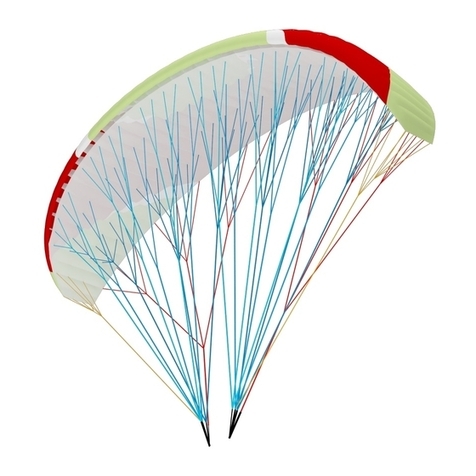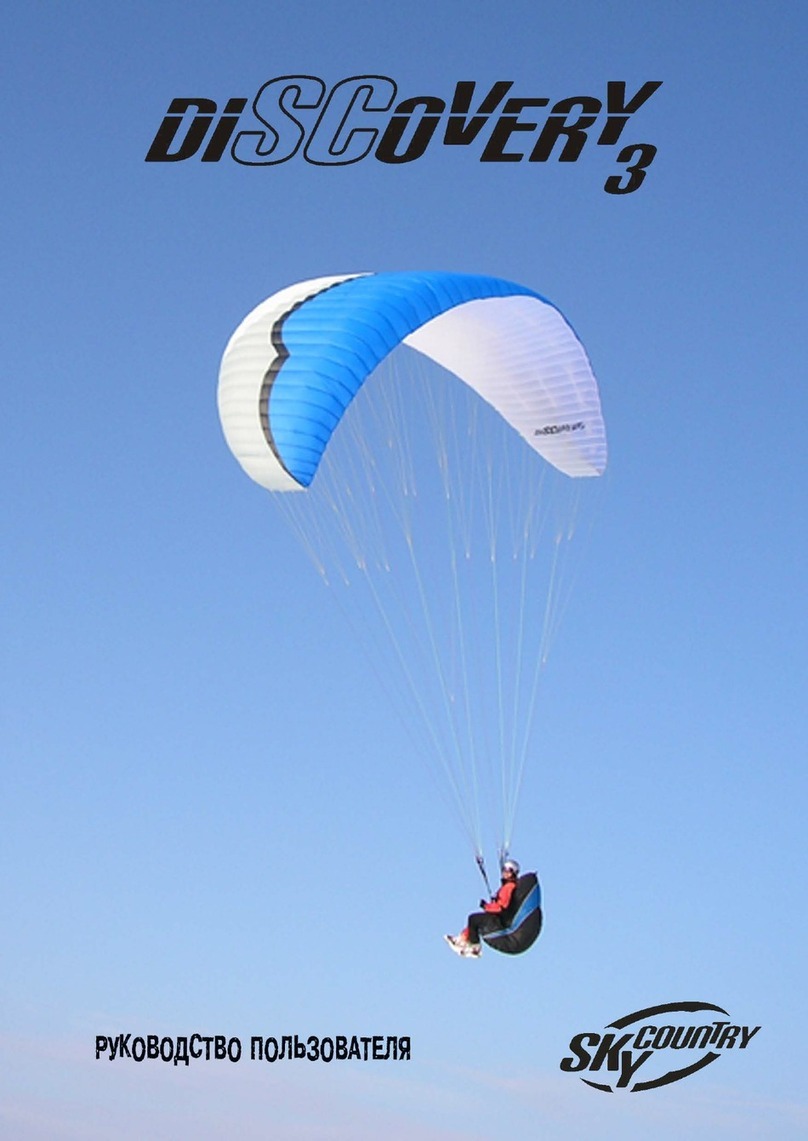
General Glider Care
Take care while using Your glider. The inappropriate and/or inaccurate use
may cause the damage of the canopy and lines, and the glider may become
dangerous in ight.
Follow these rules and your Discovery-5 will be in good condition:
- Do not expose your glider to the sun any longer than necessary
- Keep it away from water and other liquids
- Do not let the front edge hit the ground
- If wet dry Discovery-5 in shade. If soaked in salty water, rinse the glider
thoroughly in non-salty water
- Keep your glider away from re
- Do not put anything heavy on your glider, do not pack it in a rucksack too
tightly.
- Regularly inspect the canopy, lines, risers and harness. If you nd any
defects, contact your dealer or the manufacturer. Do not attempt to self-
repair the paraglider!
- If you detect a damaged line, inform the dealer or manufacturer about
the line number according to the line plan
- Keep your Discovery-5 in a rucksack in a dry well-ventilated place under
neutral temperature and humidity conditions
- If you do not use the glider, then once a month you should unpack it, ven-
tilate it well, and then pack it back in the rucksack.
- Do not wash Discovery-5. Do not use detergents or solvents. Clean dirty
places with wet soft cloth or sponge.
Packing Your glider
The paraglider must be folded cell to cell so that the plastic rods at the
leading edge lie at on each other and don’t get bent. Try to pack your
Discovery-5 as loosely as the rucksack allows, because every fold weakens
the cloth.
Avoid packing the glider if it is wet or contains the abrasive particles (sand,
ice...). If the glider was packed wet and/or contains abrasive sta - unpack
it, let it dry and remove the trash from the canopy as soon as possible.
23


































